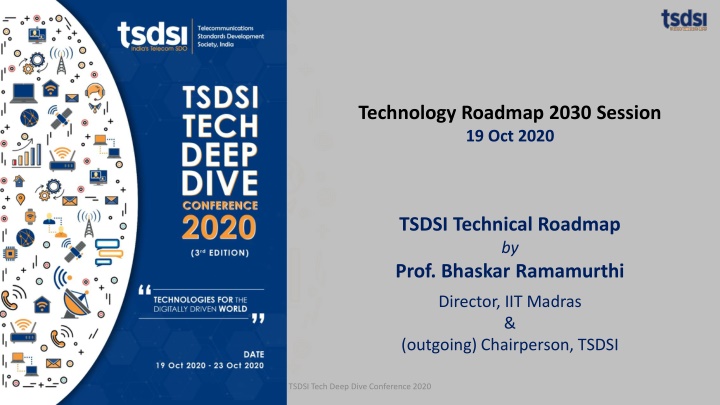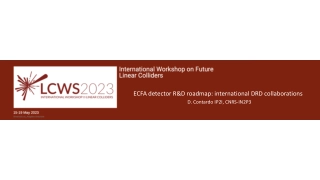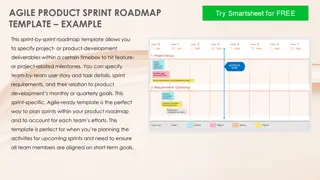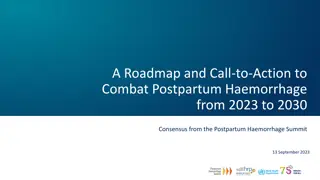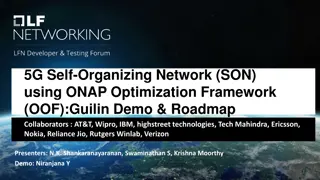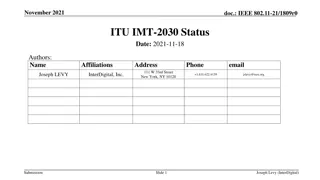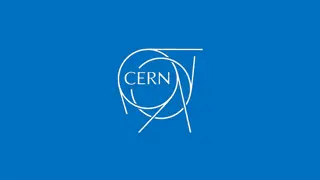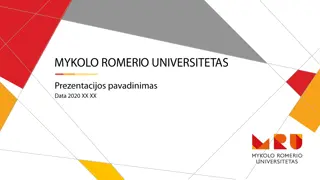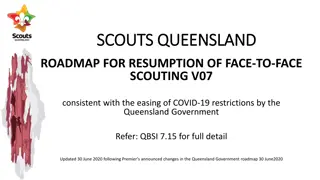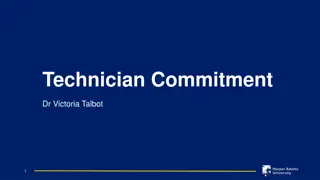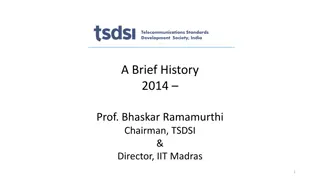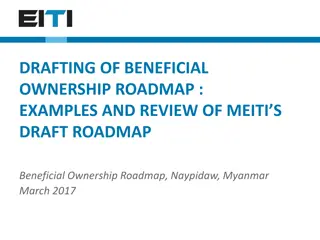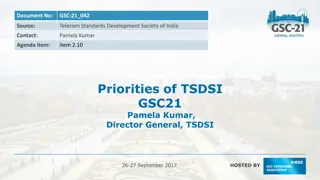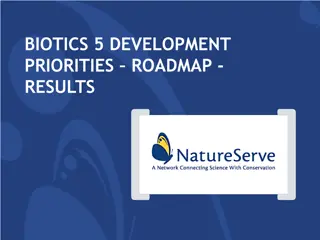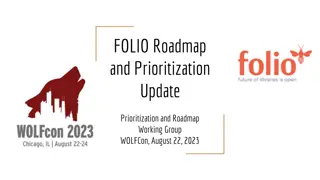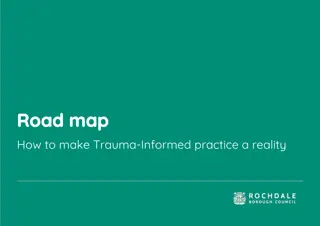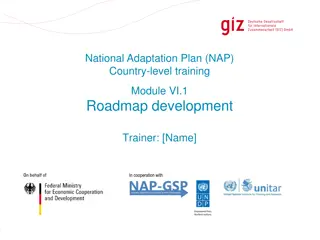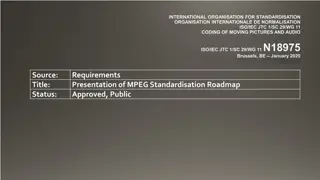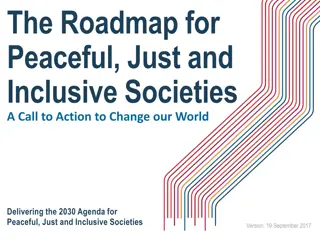TSDSI Technical Roadmap 2030 by Prof. Bhaskar Ramamurthi
TSDSI Technical Roadmap outlines the key focus areas for the upcoming years, driven by members on a voluntary basis. The roadmap covers short, medium, and long-term goals related to cloud interoperability, public safety, dual SIM, Indian language support, affordable rural broadband, and more.
Download Presentation

Please find below an Image/Link to download the presentation.
The content on the website is provided AS IS for your information and personal use only. It may not be sold, licensed, or shared on other websites without obtaining consent from the author.If you encounter any issues during the download, it is possible that the publisher has removed the file from their server.
You are allowed to download the files provided on this website for personal or commercial use, subject to the condition that they are used lawfully. All files are the property of their respective owners.
The content on the website is provided AS IS for your information and personal use only. It may not be sold, licensed, or shared on other websites without obtaining consent from the author.
E N D
Presentation Transcript
Technology Roadmap 2030 Session 19 Oct 2020 TSDSI Technical Roadmap by Prof. Bhaskar Ramamurthi Director, IIT Madras & (outgoing) Chairperson, TSDSI TSDSI Tech Deep Dive Conference 2020
TSDSI Technical Work TSDSI Technical Work Roadmap created by Members and updated every few years Steered by Roadmap Committee representing all membership verticals Topics identified reflect global and national relevance Work is carried out in two Study Groups Networks, and Services & Solutions All technical work is driven by members On volunteer basis Study items that progress well automatically reflect their intrinsic interest and relevance to the members TSDSI Tech Deep Dive Conference 2020
TSDSI Roadmap 1.0 : 2018-20 1. Cloud Interoperability 2. PPDR (Public Safety) 3. NAVIC support 4. Dual SIM 5. Indian language support Secure Service Assurance About 50 Ideas SHORT TERM 1. Low Mobility Large Cell 2. IMT-2020 RIT Broadcast Offload Affordable Rural Broadband, Broadcast Broadband Convergence 3. MEDIUM TERM LONG TERM Roadmap Committee 1. 2. vRAN / cloudRAN Call Drop IoT, M2M Network Architecture and Performance 3. TSDSI Roadmap
TSDSI Roadmap 1.0 2019 2018 2020 Phase II: Technical Specification - Specifications for gaps identified - Plugfests & certification Phase I: Study Report - Indian usage scenarios - Indian user requirements - Gap analysis wrt available standards Critical Communications (PPDR) Phase I: Study Report (SR) - Requirement analysis for affordable broadband access in rural areas - Low Mobility Large Cell Use Case in IMT-2020 Phase II - Standardization - Candidate technologies for affordable rural broadband in IMT2020 RITs - Inclusion of NAVIC support in 3GPP Rel 16 - Layer 3 offload of unicast (in 3GPP) Phase III: IMT-2020 - TSDSI RIT - IMT-2020 Evaluation, Finalisation Affordable Rural Wireless Broadband, NAVIC support, Broadcast Offload Phase I: Study Report - Enhancements over IPRAN cloud radio - vRAN architecture (microwave / E- band / V-band) - Layer-1, 2, & 3 functions among RRH and BBU Phase II: Standardization - CPRI Front-haul vRAN, cloudRAN
TSDSI Roadmap 1.0 2019 2018 2020 Phase I: Use Cases & Gap Analysis Phase II: Testbed Proposal Cloud Interoperability (partnership with CCICI) - Use cases for smart city projects; - Gaps vis a vis Global standards - Draft specifications: - Interop Test Bed - Interop Plugfests. Phase I: Study Reports Spectrum Studies - compatibility & coexistence studies with satellite and other localised users 12 bit encryption and Support for Indian languages in financial transactions Indian Language Support
TSDSI Roadmap 1.0 2019 2018 2020 Phase I: Whitepapers, Dedicated Workshops - Use cases for India - Feasibility study of existing architectures Phase II: Technical Reports, Test Bed Create a test bed validate use cases Information Centric Networking (ICN) - - Phase I: Tech Specs - DualSIM usage scenarios w single/dual RF - Single RF DualSIM Requirements & - Specifications Phase II: Tech Specs - Dual RF/active DualSIM - end-to-end technical specification - test & interop requirements. Dual SIM
TSDSI Roadmap 2.0: 2020 - About 20 Ideas 5G enablement/enhancements /gaps NDCP 2018 Spectrum Studies/ Dynamic Spectrum Architecture/E-Band Studies Rural Broadband Architecture Virtualization/O-RAN/Cloud Resource Management for Radio Smart IoT Data Pruning at the End Nodes Mobile Data Protection & Privacy Contact Tracing & Proximity Detection Applications/ 5G Use Cases Security Autonomous Vehicles Emergency Communication Rural Broad-Band/Community Networks FINNET Railways Application Roadmap Committee Colour Code Meaning Beyond 5G & 6G / Beyond IMT2020 @ ITU 6G Integrated NWs AI/ML/Haptics Tera Hz Communication VLC Li-Fi Security & Quantum Key Distribution Co-existence of Satellite & Terrestrial Taken Up in Study Groups Taken Up in Special Interest Groups Items Under Discussion TSDSI Roadmap
Spectrum Studies Spectrum Studies Satellite - Terrestrial co-existence Other administrations (e.g. Japan) are doing it (C-band, ) But their experience not directly transferable . Satellites are on the horizon near the tropics India has a huge population Uplink interference at satellite from hundreds of millions of phones also has to be studied E-Band Studies Focussed beams, short haul Light licensing or un-licensed? criss-crossing links possible in same geographical area TSDSI Tech Deep Dive Conference 2020
Rural Broadband Architecture Rural Broadband Architecture BharatNet terminates in panchayat villages Coverage for other villages From base station at Panchayat village? Via relays? mm wave backhaul, in-band backhaul (flexible duplexing ) Multiple service providers OTT WiFi offload within village Village Community Network (so-called Local 5G in Japan) TSDSI Tech Deep Dive Conference 2020
vRAN vRAN, Edge Computing , Edge Computing vRAN / Cloud Resource Management Localised RAN clouds for cluster of sites Co-located edge computing for applications E.g. surveillance camera feeds Captive or third-party cloud Standards for RRH connectivity - O-RAN Cloud interoperability TSDSI Tech Deep Dive Conference 2020
5G Use Cases : V2X 5G Use Cases : V2X Autonomous Vehicles Early application in off-road vehicles like tractors (also pursued in Japan) Heterogenous traffic on Indian roads makes it difficult Drones/UAVs : early days can drive adoption Security, safety Can V2X technology, specifically URLLC, be used to drastically reduce accidents? This can pave the way for autonomous vehicles on our roads . Platooning on highways for increased safety TSDSI Tech Deep Dive Conference 2020
5G Use Cases : Captive networks 5G Use Cases : Captive networks Railways, Defence establishments, Police, hitherto set up their own captive networks Network slicing as an alternative Captive spectrum or shared? Regulatory issues Service guarantee, resilience Captive core or shared? security TSDSI Tech Deep Dive Conference 2020
5G+ and 6G : 3GPP 5G+ and 6G : 3GPP Rel Rel 17 and beyond 17 and beyond Capacity & Coverage enhancements (wrt Rel16) In-Band Full-Duplex communication Flexible duplexing, to begin with IAB enhancement Support for In-building systems Village-level relay in rural network MBMS support for 5G NR SA Deployment Option-6 DU&RU split options 3,6&7 TSDSI Tech Deep Dive Conference 2020
6G : Haptics/AI 6G : Haptics/AI- -ML ML Next big sensor: haptics Touch, feel, texture via phone AR/VR ML in RAN PHY, MAC, NL optimization ML in Application / service layer ML as a service: Personalised ML models TSDSI Tech Deep Dive Conference 2020
Thank You bhaskar@iitm.ac.in TSDSI Tech Deep Dive Conference 2020
